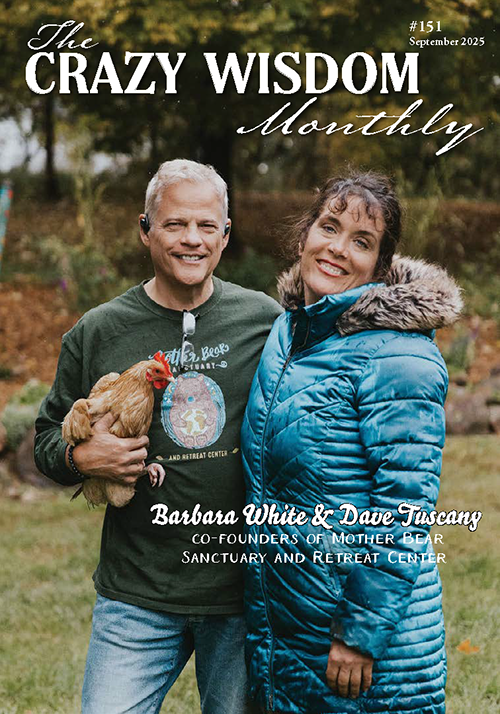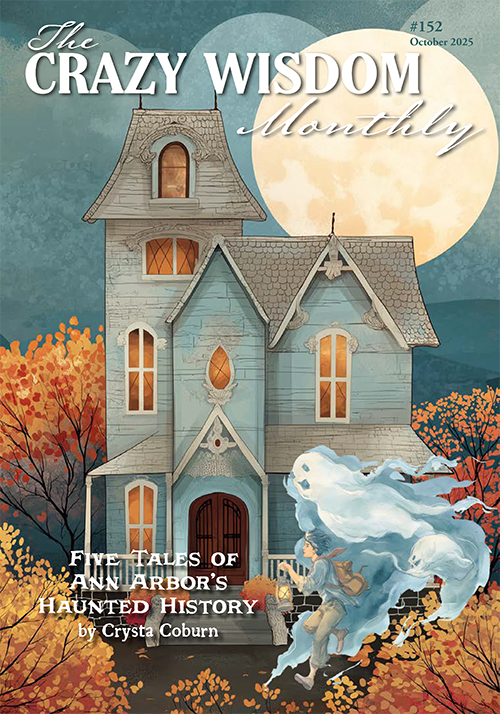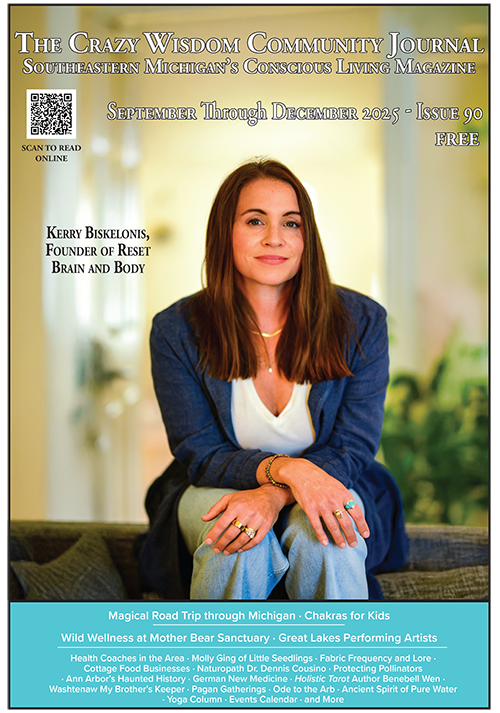By Sibel Ozer
Usually, ideas from a book find their way into a blog about a painting with synchronicity rather then cognitive synthesis, in other words, more by happenstance as opposed to conscious deliberation. The above painting came about as a direct result of my reading Original Resistance, Reclaiming Lilith, even though as usual, I wasn’t going for it intentionally, but rather following the creative flow. I thought I was painting another Tree Spirit until the snake showed up letting me know this is Lilith herself, and I better get on with telling her story.
Lilith appeared as simultaneously woman, tree, and snake all at once, interconnected in the way all living things are even in our separateness. Another way to see it could be as parts of a whole. Lilith, embodying woman (human, intelligent, and creative), tree (plant, rooted, and providing), and snake (animal, wise, and medicinal). Her story is one with many teachings.
According to legend (history, mythology), Lilith is the first wife of Adam, created from earth in the same way and at the same time. I was surprised that I had never heard about her before and had to wonder which stories get censored and how we tell even the known stories, how what we highlight makes a world of difference. The story unfolds like many a human relationship, in the development of a desire to dominate the other; only Lilith refuses to agree to it.
Some argue that men’s dominion over women is inevitable due to the simple physical power differential, even though history abounds with examples of domination through psychological/mental persuasion, or the ability to influence and/or create agreement more often then physical advantage. Lilith brings to awareness that dominion does require acquiescence on the part of the dominated and can be resisted, even refused. This idea clearly would not apply to all situations.
She refuses to give into Adam’s desire to dominate and decides to leave The Garden of Eden, prioritizing equality and independence instead of security and connectedness. The loss of connection to the only other human, and the only home she knows, is a heavy price to pay for Lilith. Most choices do involve the letting go of something of value once cherished. She is said to find a home around the Red Sea region and is able to connect with daemons, finding partnership and a space to call her own, even if less idyllic.
The price of this separation to Adam is less obvious, but deserves contemplation all the same. Having an equal as a partner, who is not afraid to challenge you and voice a viewpoint other than yours, is rather valuable. A relationship with an obvious power differential might seem preferable to the one who holds the power, however closes the door to the possibility of growth and development that requires the presence of another, unafraid to point out one’s blind spots. Learning is not possible without some degree of loss and pain, as it requires the letting go of paradigms that offered understanding and comfort, however incomplete. The shedding of the snake’s skin is often viewed as symbolic of this kind of transformation.
The story continues with the creation of an “improved” model of woman, this time from Adam’s rib, in the hopes that she will not be able to tolerate separation whatever the cost. The second wife agrees to be dominated by Adam, convinced that she is “lesser than” man created in the image of a male God.
Whatever it is about the two X chromosomes, Eve too ends up listening to her inner wisdom over the limits set to her by God and Adam. It is clarified that she should not eat from the apple tree and yet she cannot resist the desire to understand life’s dualistic nature. And once again, the price to pay, this time for both man and woman is exile from the initial “perfect” home environment as well as the gift or curse of mortality.
Ignorance is bliss, and the price of knowing, often leads to pain. For a contemplation on the idea that this is indeed worthwhile, I highly recommend Paul Brand’s book The Gift of Pain. A British hand surgeon, born to missionary patients, he came to this insight through his life’s work with patients with leprosy, a condition characterized by the loss of sensation that includes pain. Losing the gift of pain is indeed a high one. So even though Eve gets demonized for her actions similar to Lilith, hers is possibly one of the greatest gifts offered to humans, the ability to differentiate between good and evil, which constitutes the basis of human choice and agency.
It is said that Lilith disguised herself as a snake making her way back to the garden, becoming the voice that offered the little bit of encouragement Eve needed to go ahead and sample the fruit. So, if it weren’t for the coaxing of the wild untamed animal part, the human part might have withstood temptation. Or, if it weren’t for the role modeling of the liberated woman, the repressed one might not have found the strength to follow the nudgings of her inner wisdom over the counsel of authority. Or, if it weren’t for female friendship -Lilith is said to have approached Eve with understanding rather then judgment, Eve might not have been able to follow through with her heart’s desire.
In the world of mortals with all its polarities, women empowering other women, stands on one end of a pole, while women judging others makes up the other end. We have all been on the receiving end as well as the giving. It is another teaching within Lilith’s story worth contemplating deeply. The only way to move away from judgment is to get in touch with both ends of a polarity that exist within all of us whether or not it is conscious. The path to true empathy passes through embodied experience and Lilith urges us to make peace with all our parts, the wild alongside the controlled, the heroine as well as the comfort seeking, the one that is persecuted and the one that is righteous. With compassion, rather then judgment.
The qualities of the Feminine represented through Lilith and Eve are of fighting for equity despite differences, of exercising choice and agency for what is right even when there is a price to pay, of having the courage to listen to inner wisdom over dogma.
We get to know who we are and what we are capable of through the stories we hear. Our origin stories tell us not only where we come from but also what we can aspire towards. Who knew that the story of our sinfulness was in fact an inspirational story.
For more on Lilith go to www.thegirlgod.com for an anthology of poems, art and essays.
Sibel Ozer is a licensed professional counselor and board-certified art therapist currently doing private practice in downtown Ann Arbor. She started her career as a clinical psychologist working with earthquake survivors in Turkey. She continued her work in the United States in hospice, hospital, and private practice settings further specializing in grief, loss, and trauma. She is a certified EMDR practitioner and a graduate of the Gestalt Institute of Cleveland. She gives experiential workshops nationally and in her country of origin (Turkey) on different art therapy topics. Visit www.sibelozer.com, call (303) 905-1109, or email fireflyarttherapy@gmail.com.



































































































































































































